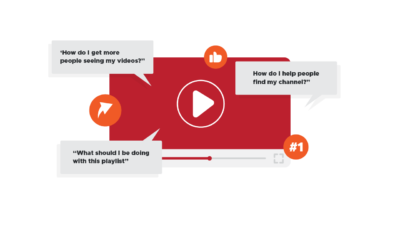Embracing AI: A Strategic Partner in Modern Marketing
At Pico Digital, we view AI as an integral tool—one that helps us work smarter, faster, and more efficiently. But here’s the important distinction: AI marketing tools are not a replacement for human creativity and strategy. Instead, it complements the decades of experience and expertise our team brings to the table. We use AI at specific points in our process to enhance efficiency, ensure consistency, and improve quality, but the core of our work—strategy, creativity, and storytelling—remains firmly in human hands.
Why AI is an Essential Ally, Not a Threat
It’s easy to see why people are worried about AI taking over, but the truth is, we’re not there yet. AI is evolving, but its role is to assist, not replace. In fact, AI amplifies the impact of human creativity by making certain tasks more manageable and efficient. Agencies that try to rely solely on AI are missing the heartbeat that makes a marketing campaign truly resonate with an audience. At Pico, we blend AI-driven insights with human intuition to create content that’s not just data-driven but emotionally engaging.
The Pico Approach: How We Use AI to Elevate Our Process
Here’s how we incorporate AI into our content creation and SEO strategies:
- Keyword and SEO Strategy: The process starts with our SEO team. We research and identify content clusters, primary and secondary keywords, and overall strategy. At this stage, AI isn’t involved. Everything is based on deep human research and years of expertise in SEO and content marketing. We might revisit this process quarterly or during key campaign phases to ensure our strategy remains aligned with industry trends and client goals.
- Content Research and Planning: Once the SEO team provides insights, the content team takes over. They do further research into the keywords and topics, ensuring the content is unique, relevant, and engaging. It’s important to ensure the topic stands out and hasn’t been exhausted online. At this point, we establish the article’s structure, headings, and length. This is all human-driven, and AI doesn’t come into play until later in the process.
- Drafting and Refining: Here’s where AI steps in as a supportive tool. Once we have a strong idea of the structure and direction of the content, we might use ChatGPT or Claude to help with the article’s flow, or to find fresh ways to approach the topic. AI might suggest restructuring a paragraph or flag potential gaps in coverage. But make no mistake—the substance of the article comes from our team’s expertise. AI is simply a tool we use to smooth out the edges.
- Quality Assurance and Consistency: After the article is written, we use AI tools like Grammarly to proofread, ensure consistency (such as title case vs. sentence case), and flag any minor mistakes. However, using AI tools for this final polish can sometimes lead to content being flagged as AI-generated in humanizing tools like WriteHuman, even when it’s largely human-written. These tools can be misleading, because they flag well-polished content that’s been improved by AI, rather than content generated entirely by AI.
- Final Review and Publication: After the AI has been used for quality assurance, our team of human editors gives it a final read-through. This ensures the content still feels authentic, engaging, and aligned with the brand’s voice. Only after this rigorous process do we consider the content ready for publication.
Key Stats: Why AI Is Changing the Game for Marketing Teams
Here are some compelling stats on how AI is transforming marketing:
- ai marketing tools can increase content production efficiency by 50%, allowing marketing teams to scale without sacrificing quality.
- 61% of marketers say AI helps them identify opportunities in their data that they would have missed otherwise, leading to more impactful strategies.
- AI-powered tools like Grammarly can reduce proofreading time by 40%, freeing up creative teams to focus on higher-value tasks.
- Companies using AI for content strategy and SEO have seen a 10-15% improvement in search rankings, thanks to better keyword optimization and insights.
The Pitfalls of Over Reliance on AI (And How We Avoid Them)
AI is powerful, but over reliance can lead to problems. Here’s what we’ve learned and how we make sure our content stays authentic:
- Over-Humanization: Tools like WriteHuman can flag content that’s been improved by AI for flow and structure as fully AI-generated. This can lead to awkward rewrites that detract from the clarity of the original content.
- Lack of Emotional Nuance: While AI can provide data-driven insights, it often misses the emotional nuance that comes from human creativity. We avoid this by ensuring that AI never takes over the core message or tone.
- SEO Risks: Google’s algorithms are evolving to detect low-quality, AI-generated content. While AI can assist in creating SEO-friendly content, human oversight ensures the content still meets the standards of creativity and engagement that search engines—and audiences—expect.
Final Thoughts: AI is a Tool—But Humans Are the Heart
At PICO Digital, we’ve found the sweet spot between human creativity and AI efficiency. While AI helps us scale, improve quality, and analyze data faster, it’s the human expertise that drives everything we do. With over 30 years of combined experience in SEO, marketing, and content creation, our team uses AI as an ally to enhance our work—not to replace it.
Whether it’s using AI for a quick QA check or leveraging it for deep insight analysis, our approach ensures the final product always has the human touch that resonates with your audience.
Ready to see how AI and human creativity can elevate your brand’s content? Let’s chat!


.jpg)




.jpg)




